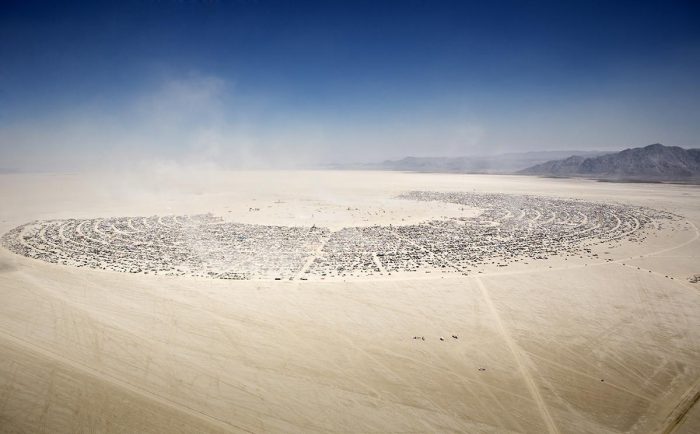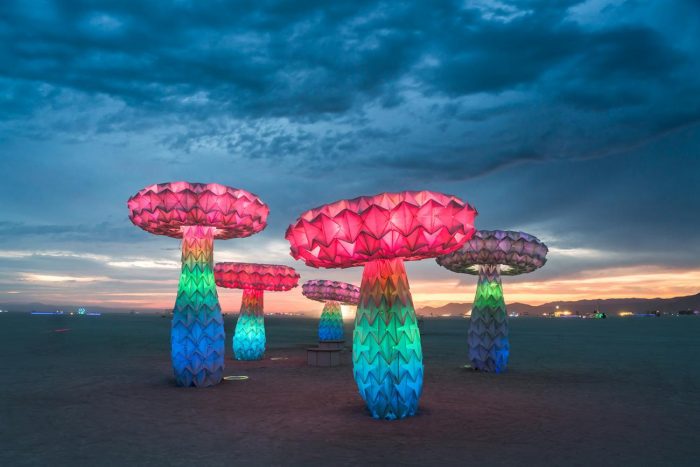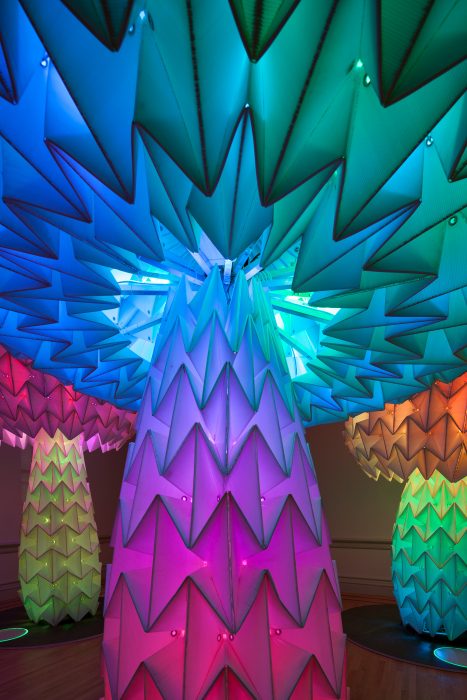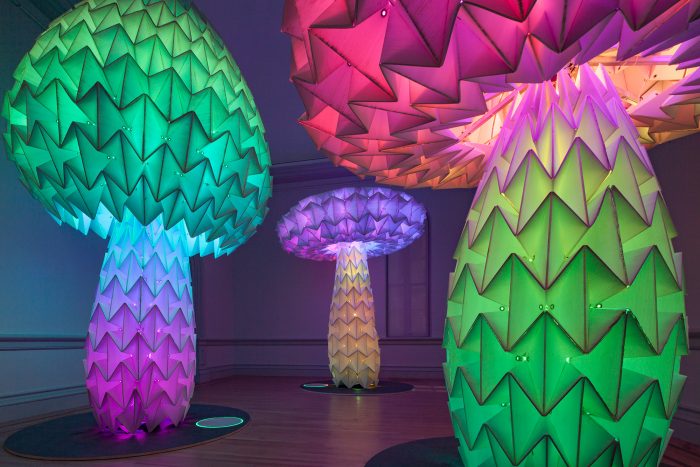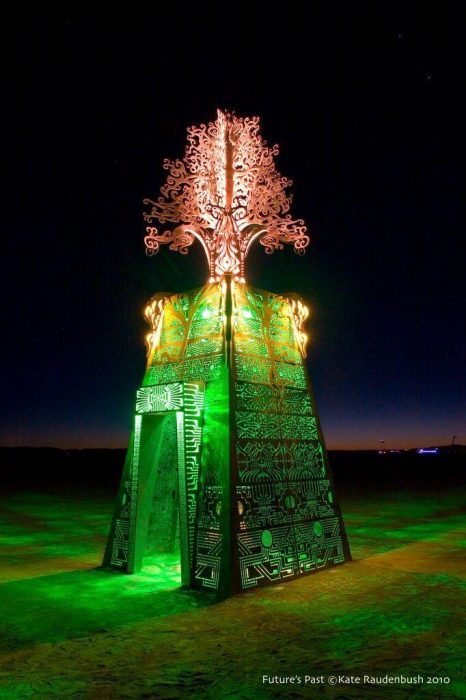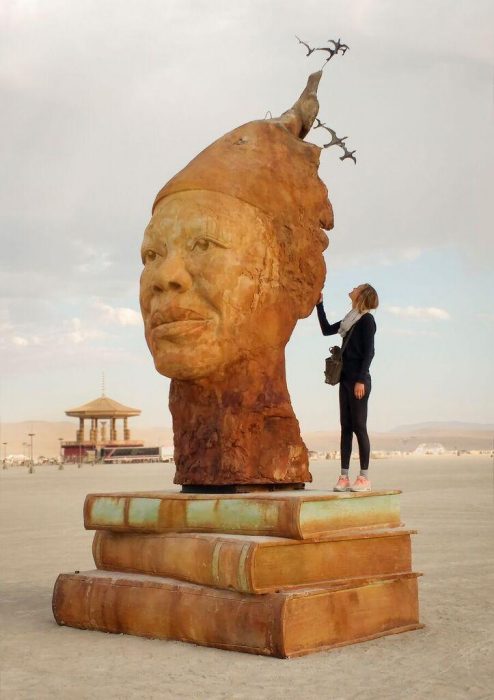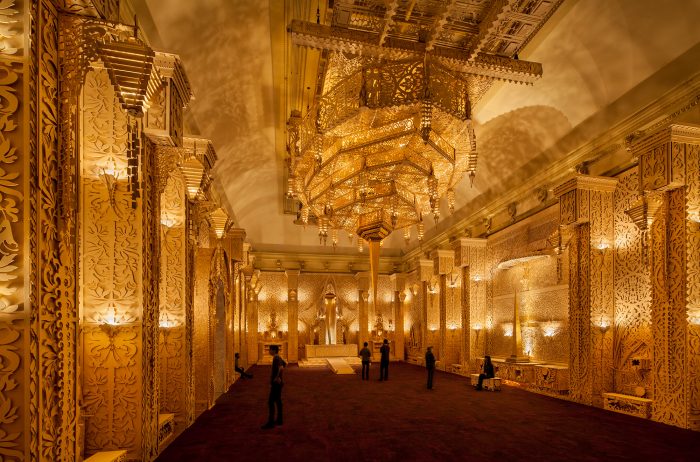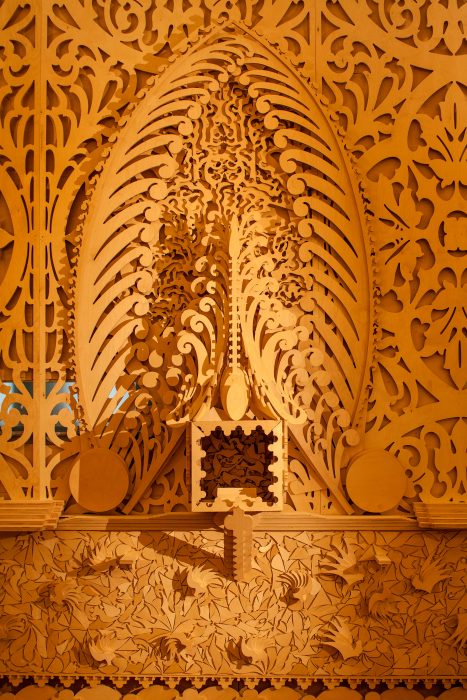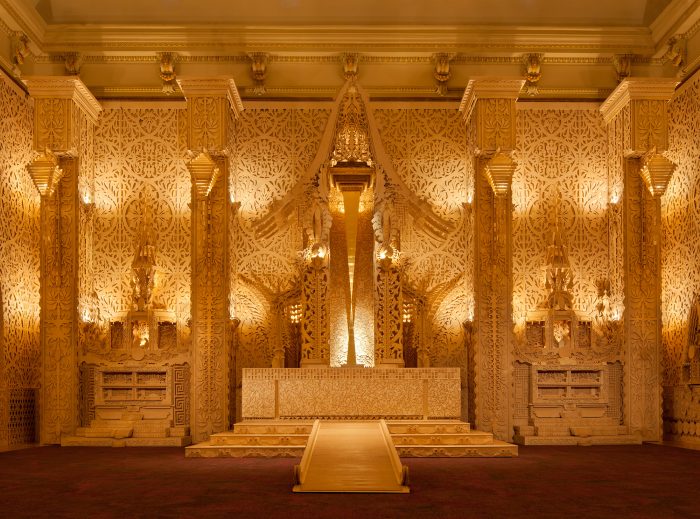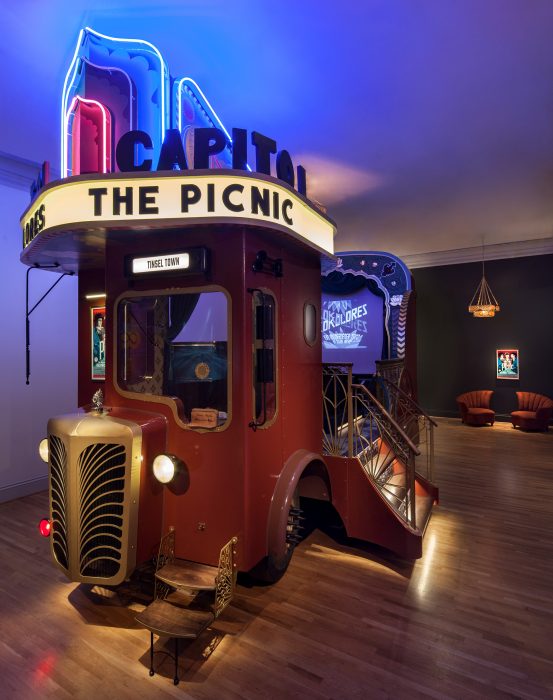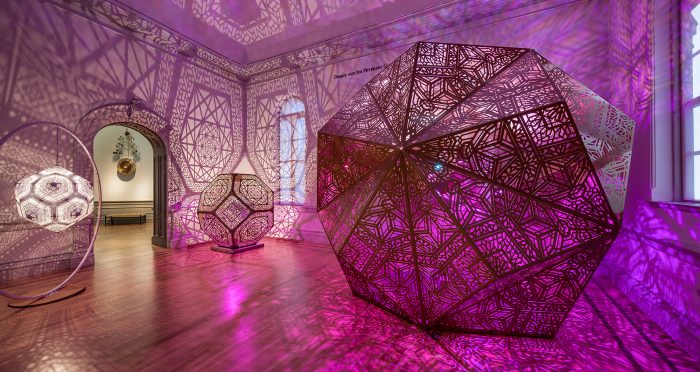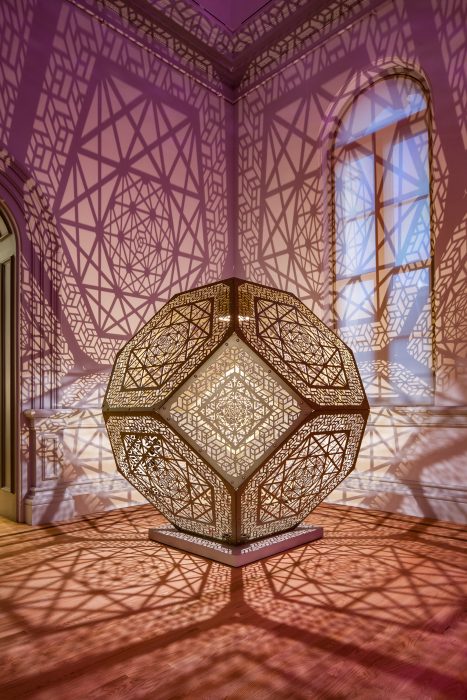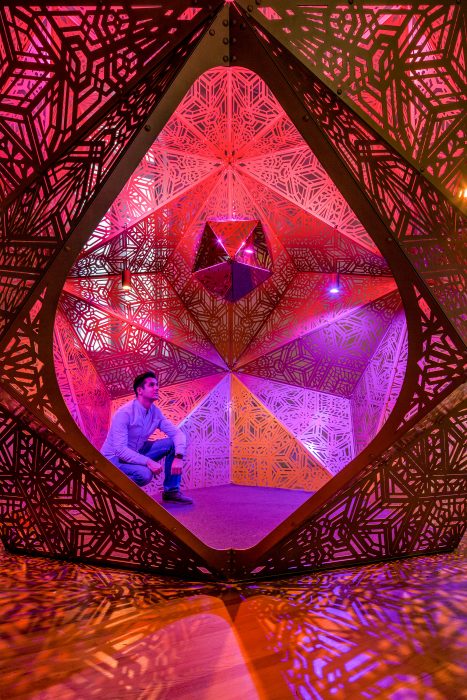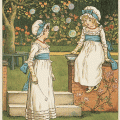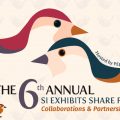No Spectators: The Art of Burning Man
Part pagan ritual, part new wave rave, Burning Man celebrates the experience of art through the immediacy of experience.
Each year in Nevada’s Black Rock Desert, a temporary city of more than 70,000 people rises out of the dust. Over the space of a few days, multistory experimental art installations and buildings are erected and many are burned to the ground. The thriving temporary metropolis known as Burning Man is a uniquely American hotbed of artistic ingenuity and one of the most influential events in contemporary art and culture.
Burning Man was born more than 30 years ago, a creative conflagration that combines the anarchy of Mad Max with New Age spirituality and a uniquely artistic sensibility. Best described as hard to describe, Burning Man is not a festival or art exhibition but a cultural movement encouraging community, self-expression and participation, where the eponymous “Man” is set alight at the end of the gathering.
Organizers lay out the streets of Burning Man’s pop-up city on the Playa and commission artworks. “Burners”—the attendees—are urged to explore various forms of artistic self-expression and participation is key, as expressed by the oft-heard motto, “no spectators.”
The Smithsonian American Art Museum’s Renwick Gallery has brought Burning Man to Washington, D.C., for the exhibition “No Spectators: The Art of Burning Man.”
Taking over the entire Renwick Gallery building, “No Spectators” features immersive room-sized installations, jewelry, costumes and the large-scale artworks that Burning Man is known for, along with photographs and archival materials that document its growth since it started as a summer-solstice bonfire celebration on a San Francisco beach.
Nora Atkinson, the Smithsonian American Art Museum’s Lloyd Herman Curator of Craft, organized the exhibition in collaboration with the Burning Man Project, the nonprofit organization that produces the annual event. Intrigued by the growing complexity of the Burning Man artworks, Atkinson noticed their resemblance to traditional craft, which lives outside the mainstream art market, its roots in handmade and maker culture.
Creativity runs wild at the gatherings now, with static and moving sculpture, performance art, buildings and more, all loosely guided by 10 principles from co-founder Larry Harvey—which may best define the ethos of Burning Man:
- Radical inclusion (anyone may be a part of Burning Man)
- Gifting (acts of unconditional giving)
- Decommodification (no commercial sponsorships, transactions or advertising)
- Radical self-reliance (participants are encouraged to rely on their inner resources)
- Radical self-expression (the participant’s self-expression is seen as a gift, without demands on its content, but it should be respectful to the community)
- Communal effort (collaboration and cooperation are valued)
- Civic responsibility (don’t be a jerk)
- Leaving no trace (respect the environment—leave it better than you found it)
- Participation (everyone is invited to work; everyone is invited to play)
- Immediacy (immediate experience is an essential component of Burning Man)
Nora Atkinson, the Smithsonian American Art Museum’s Lloyd Herman Curator of Craft, organized the exhibition in collaboration with the Burning Man Project, the nonprofit organization that produces the annual event. Intrigued by the growing complexity of the Burning Man artworks, Atkinson noticed their resemblance to traditional craft, which lives outside the mainstream art market, its roots in handmade and maker culture.
In addition to the exhibit inside,with works by David Best, Candy Chang, Marco Cochrane, Duane Flatmo, Michael Garlington and Natalia Bertotti, Five Ton Crane Arts Collective, FoldHaus Art Collective, Scott Froschauer, HYBYCOZO (Yelena Filipchuk and Serge Beaulieu), Android Jones, Aaron Taylor Kuffner, Christopher Schardt, Richard Wilks and Leo Villareal, Atkinson and the museum have partnered with Washington, D.C.’s Golden Triangle Business Improvement District to display six art installations from past Burning Man festivals in parks and neighborhoods, including works by Jack Champion, Mr. and Mrs. Ferguson, HYBYCOZO, Laura Kimpton, Mischell Riley and Kate Raudenbusch. Go exploring and check out all six installations.
“No Spectators: The Art of Burning Man” gives visitors an opportunity to experience Burning Man without the relentless desert sun or risk of “Playa feet,” the burn from the alkali desert dust. Those who have never made it to Nevada can take in the art of Burning Man, a bit of bohemian ethos and artistry amid the permanent concrete buildings and streets of the nation’s capital.
“No Spectators: The Art of Burning Man” is on view through Jan. 21, 2019.
Read an interview with Atkinson on the museum’s blog.
What do the artists think? 16 of Burning Man’s Biggest Artists on Showing Their Work at the Smithsonian
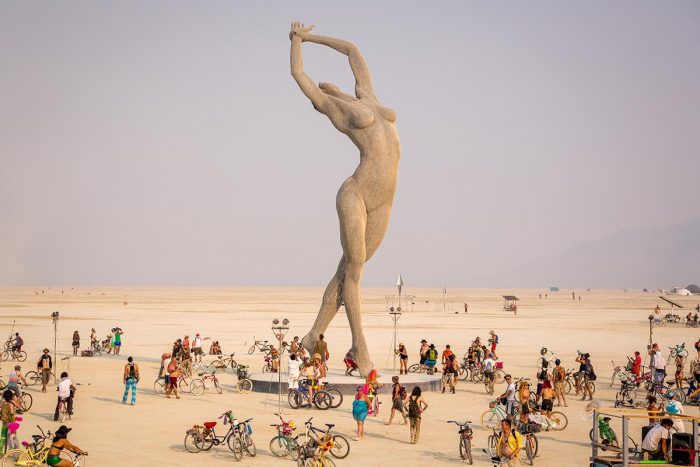
Marco Cochrane, “Truth is Beauty,” 2013, stainless steel rod, stainless steel mesh. Photo by Eleanor Pregor
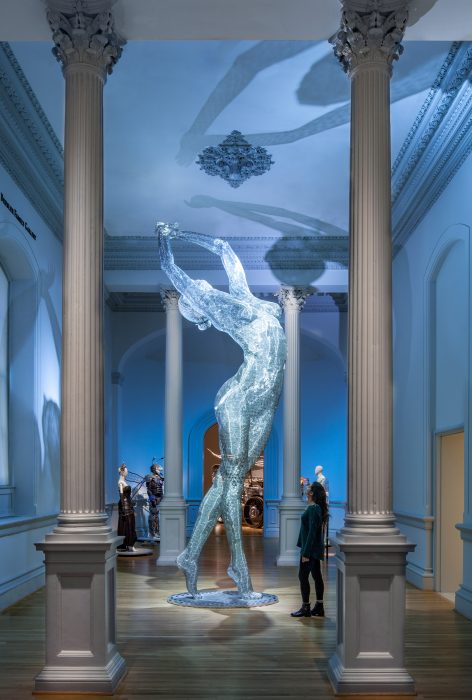
Installation view: Marco Cochrane, “Truth is Beauty,” stainless steel rod, stainless steel mesh. Photo by Ron Blunt / Renwick Gallery
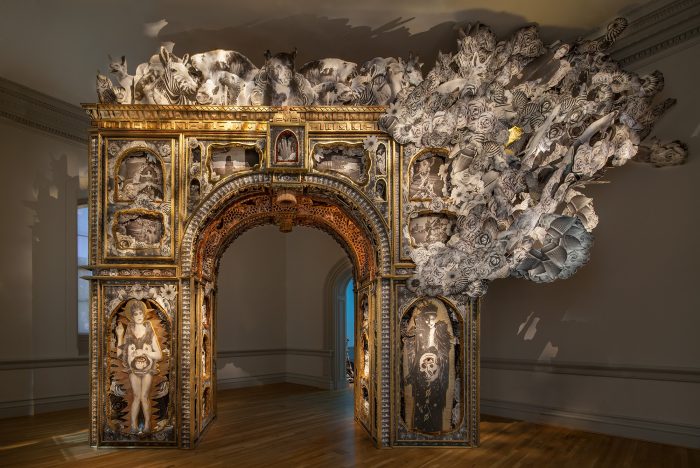
Installation view: Garlington and Bertotti, “Paper Arch,” 2018. Photo by Ron Blunt / Renwick Gallery
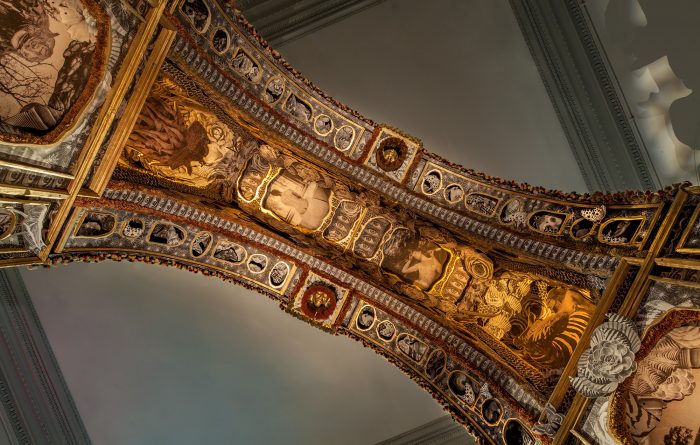
Installation view (Detail): Garlington and Bertotti, “Paper Arch,” 2018. Photo by Ron Blunt / Renwick Gallery
Posted: 4 April 2018
-
Categories:
American Art Museum , Art and Design , Collaboration , Feature Stories , Renwick Gallery

